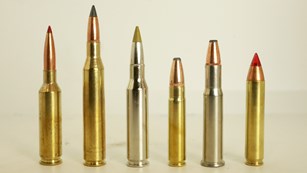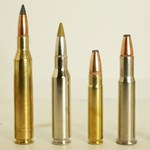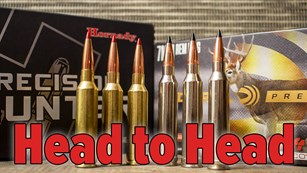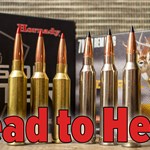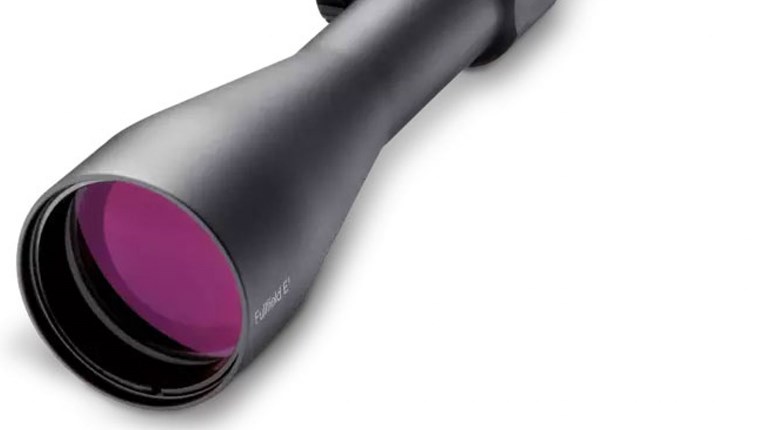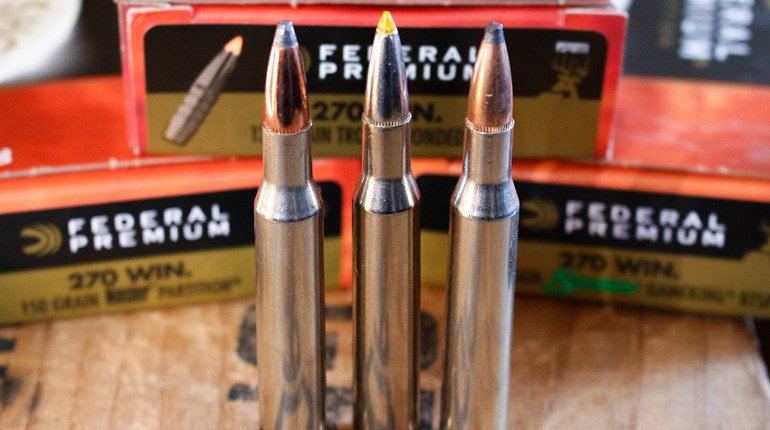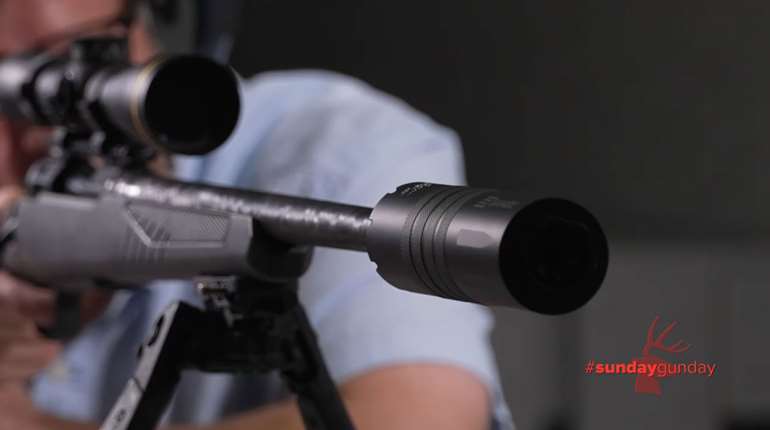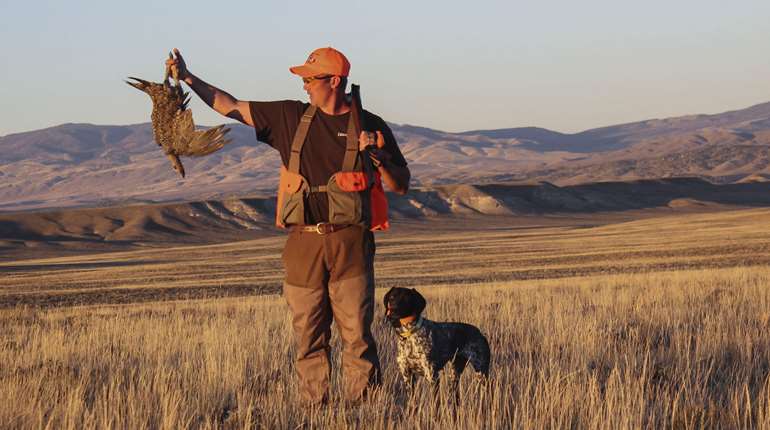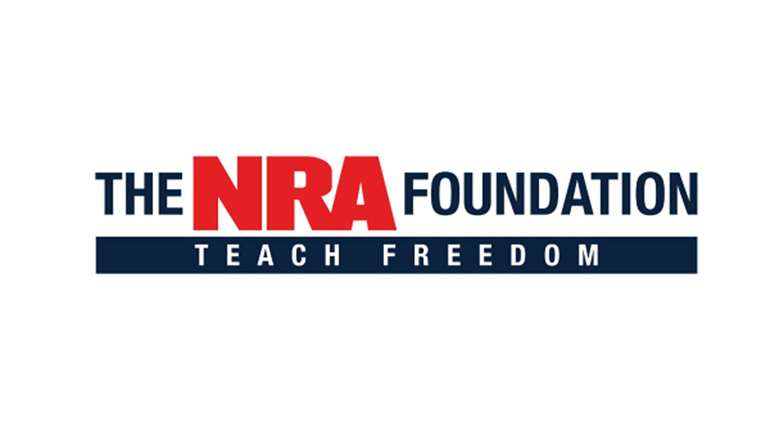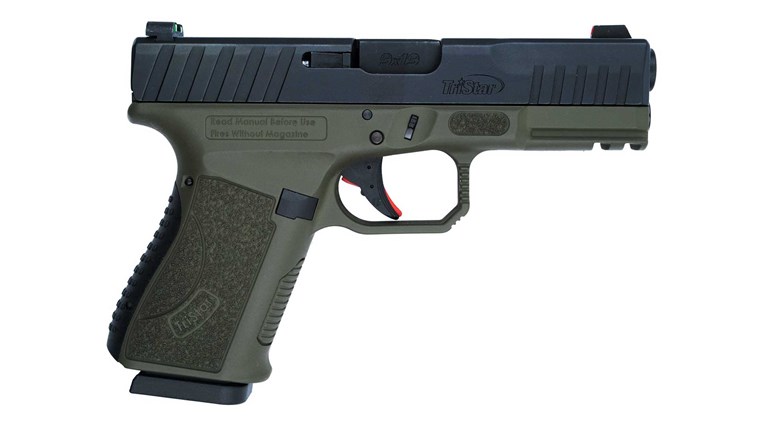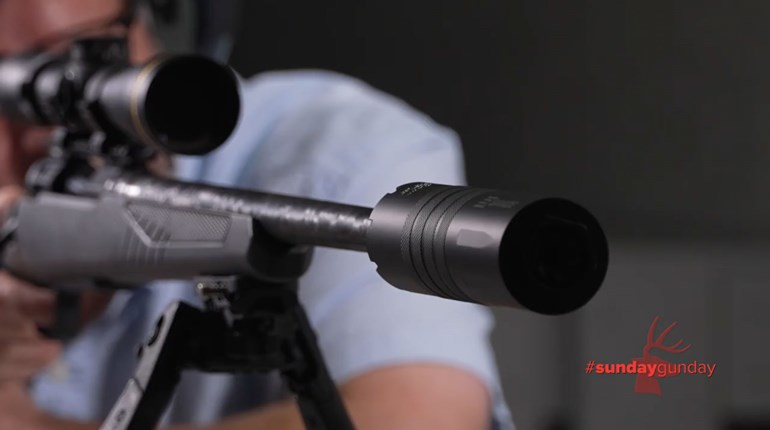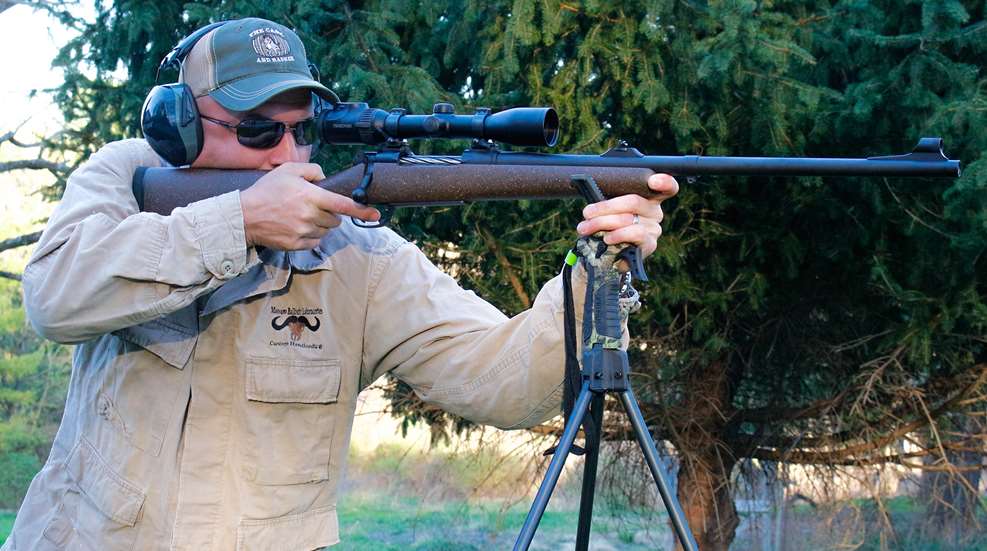
I was creeping through a stand of pines, trying my best not to snap a twig on a morning where the mercury wasn't out of the teens, when the doe stood from her bed. I froze in my tracks and readied the .243 Winchester, and as I anticipated, the buck rose with her. In that dark evergreen thicket, in the early hours of an overcast day, I simply could not pick up the fine crosshair of the vintage steel-tube Weaver scope. I let him go, because I couldn’t confidently place the shot. It was my first experience with the pitfalls of a less-than-desirable reticle. While the rifle was wonderfully accurate, and in bright light the crosshair surely worked, it sure wasn't the best choice for a high-stress, low-light situation, especially for a young hunter. I ended up shooting that buck later that afternoon, so I suppose all’s well that ends well.
Since that encounter, I've tried to find the best-tool-for-the-job, depending on the hunting situation—and my budget. Sometimes, a simple duplex-style reticle will get the job done well, and other times, I’ve found myself wanting something fully illuminated, with the full Christmas Tree; horses for courses, as the saying goes.
 This Winchester 70 .300 H&H wears a Leupold 2.5-8x scope with a simple duplex reticle, perfect for medium range shots.
This Winchester 70 .300 H&H wears a Leupold 2.5-8x scope with a simple duplex reticle, perfect for medium range shots.
One point is inarguable: today’s optics are the best they’ve ever been, and seem to be getting nothing but better. They hold zero reliably, take adjustments precisely, and transmit more light than has ever been possible due to advances in lens coating and design. But if you can’t hold a precise point of aim, all is for naught, and with the wide variety of reticle options on the market today, the hunter can tailor the reticle to his or her needs. As this is American Hunter, there are all sorts of applications, from prairie dogs to elephants, so you will need to decide if your rifle is a do-all sort of tool, or if you’re setting up something specific, whether a deer rifle for the woods, or a sheep rifle designed for shooting at long ranges. Will there be a vast majority of time spent in low-light conditions, such as deer hunting requires? Or will you often be hunting dark animals in thick vegetation, like black bear in the spruce jungles of the Northeast and Canada, or Cape buffalo in the jesse bush of Africa? Are you a varmint hunter who spends their time in the alfalfa fields in pursuit of summer woodchucks, or one who enjoys the rapid-fire action of a hot prairie dog town? That might require a different choice of reticle altogether.
 This Leupold VX-5HD 2-10x42 has the common duplex reticle and the CDS elevation turret, but also sports the FireDot illuminated dot at the crosshair, making for a very versatile optic.
This Leupold VX-5HD 2-10x42 has the common duplex reticle and the CDS elevation turret, but also sports the FireDot illuminated dot at the crosshair, making for a very versatile optic.
My instinct, after nearly four decades of big-game hunting, and longer using a survey transit professionally, is to keep the reticle as simple as possible, while still checking all the boxes. For the majority of my deer rifles, a simple duplex reticle is more than sufficient. Most of the scoped rifles are chambered in cartridges that are zeroed at 200 yards—far beyond the average shot distance—so holdover is no issue, nor is wind drift. I like the duplex reticle because the thicker lines naturally center the eye, even in low light the brain can naturally position the intersection of the hairs, and yet the thinner section of the hairs allow for precise shot placement. Some of those who spend considerable time on driven hunts prefer the German 3P#4 reticle, which has the thick-to-thin transition on the horizontal hair, and the lower hair, but not the upper hair, allowing for quicker acquisition on running game.
To compensate for trajectory holdover (as well as wind deflection), you’ll need to make a decision as to whether or not you wish to dial you elevation turret to compensate, or if you want to use some sort of reticle with reference points to establish some particular amount of elevation difference. Usually, a hunting cartridge will require some amount of trajectory compensation past the 200 yard mark, and how you compensate will influence your choice of reticle. For example, the Leupold CDS (Custom Dial System)—which uses your personal ballistic data to correlate the elevation turret to distances rather than just some portion of an angle—is a complete game-changer, and allows the user to maintain a simple reticle while accurately placing distant shots. In that instance, the same duplex reticle I like on my 100-yard rifles is applicable on the long-range guns.
 The Leupold VX-6HD with TMOA illuminated reticle can be used for both trajectory compensation as well as wind deflection correction, without having an overly cluttered look.
The Leupold VX-6HD with TMOA illuminated reticle can be used for both trajectory compensation as well as wind deflection correction, without having an overly cluttered look.
If you choose to leave your turrets alone, a graduated reticle is going to be a necessity for distant ballistic solutions for both trajectory and wind deflection. Understanding some of the terms associated with rifle scopes can be difficult for those who don’t regularly deal with such things, but once you wrap your head around it, it’ll make sense. Both MOA (minutes of angle) and mils (milliradians, or 1/1000th of a radian) are just measurements of angle, and that angle will cover increasingly larger distances as the distance from the source increases. It’s commonly known that one-MOA covers an inch at 100 yards (the actual measurement is 1.047 inches if we’re splitting hairs), so because it’s diverging at a constant rate, one MOA will cover two inches at 200 yards, three inches at 300 yards, and so on. If your 300 Winchester Magnum is zeroed at 200 yards, and hits six inches low at 300 yards, you’ll need two MOA of adjustment (3 inches/MOA x 2 = 6 inches). If you have one-MOA hashmarks on your reticle, simply count two and hold that position on the target. It’ll require a bit of math in your head, or a drop chart, but with practice it becomes easy. It can also be worked out in milliradians (one milliradian = 0.36 inches at 100 yards), if you prefer that measuring system. Having been a surveyor for my entire adult life, my brain works easiest in MOA, but the choice is up to you.
 Swarovski’s BRX-1 reticle can, with a bit of range work and practice, become a very useable design without having a confusing look. While not marked on the reticle, it isn’t difficult to use this design to make longer shots.
Swarovski’s BRX-1 reticle can, with a bit of range work and practice, become a very useable design without having a confusing look. While not marked on the reticle, it isn’t difficult to use this design to make longer shots.
One important factor with compensated reticles is whether or not you prefer a first focal plane or second focal plane system. In a first focal plane scope, the reticle will change size in correlation to the magnification setting, and the varying hashmarks will always maintain the same values; that two-MOA hashmark is valid at any magnification setting. In the second focal plane scopes, the reticle always stays the same size, so the values will change with differing magnification settings, and the manufacturer will indicate the proper magnification setting at which the marks are properly graduated. It seems that most American hunters seem to prefer second focal plane riflescopes, so pay strict attention to the magnification setting required to get the reticle to work properly.
My personal hunting situations don’t often require long range shots, so my trajectory compensation vary from none-at-all (or estimating holdover knowing the average deer/bear body size) to a simple elevation turret marked for a chosen load. Though I own and use scopes with the vertical crosshair marked for MOA graduations—among them the Leupold VX-6HD equipped with the T-MOA graduated reticle, and the Zeiss Conquest V4 with the ZBi reticle—I tend to prefer to use the elevation turret to make whatever elevation adjustments I need, but the wind deflection adjustments are a different story. I've done it before—especially at those humbling long-range classes at the SAAM Shooting School at the FTW Ranch—but I prefer not to dial for wind. Yes, those Leupold VX-6HD scopes have a bold, easy-to-read windage dial, but I am much more comfortable using a graduated horizontal hair to visually hold for wind. Leupold’s WindPlex reticle keeps the vertical hair as clean as any duplex reticle, yet gives the shooter one MOA graduations out to ten MOA, on either side of the intersection. To my mind, the concept of the WindPlex reticle makes the most sense for the hunter, as it minimizes the look of the reticle, yet offers truly valuable data for varying wind calls. The progresses made in elevation turrets make trajectory holdover simpler, yet the variables associated with wind calls seem to call for a more fluid solution, and a graduated hair makes the most sense to me.
 The Zeiss ZBi 68 reticle gives plenty of visual data for making adjustments for both trajectory and wind deflection, and the small center crosshair can be illuminated.
The Zeiss ZBi 68 reticle gives plenty of visual data for making adjustments for both trajectory and wind deflection, and the small center crosshair can be illuminated.
The full “Christmas Tree” reticle is the most complex, yet can offer the most flexibility to those who have to engage a multitude of targets at varying distances. These reticles are well-suited to the prairie dog hunter on the windy plains, but there is a whole lot of information to process within that reticle. The Zeiss ZBi is one such reticle, though there are more complex designs out there. You will definitely need a bunch of range time to become comfortable with these more complex reticles, especially on the smaller targets that woodchucks and prairie dogs offer.
Regarding an illuminated reticle: get one. The option for any sort of illumination is well worth the additional cost, especially if you’re topping a deer rifle, or setting up a gun which might be used on baited black bears, hogs at last light, elk in dark timber, etc. Leupold’s FireDot is one of the simplest, offering a fine illuminated dot at the junction of hairs, but man it is very effective. It made a huge difference on my leopard hunt, where a tom came to bait at very last light, and it will drastically improve shot placement on a big buck at dusk. I don’t like too much illumination, as the larger the reticle ‘display’, the brighter the overall illumination will be, and that can actually be counterproductive. Give me a simple dot, or a small portion of the crosshair which can be gently illuminated at last light, and I’m a happy hunter.
 Leupold’s WindPlex reticle is a perfect choice for those who prefer to dial for elevation adjustments, yet make wind adjustment on the reticle.
Leupold’s WindPlex reticle is a perfect choice for those who prefer to dial for elevation adjustments, yet make wind adjustment on the reticle.
A graduated reticle is very valuable tool, and not just for the speedy cartridges at long range. I was recently on a deer hunt in Kentucky, using the Winchester Deer Season XP load in 400 Legend. With a 150-yard zero, that load will drop five inches at 200 yards, and a foot at 250 yards. That’s a lot of drop in a hundred yards, and could easily cost you a buck. With a good graduated reticle, those longer shots can become much easier.
One last word—all these great graduated reticles and scope turrets won’t be worth anything if you cannot accurately determine the distance to your game animal. A good rangefinder is going to become your best friend when it comes to holdover, with many offering a ballistic solution for your chosen load right in the display.


